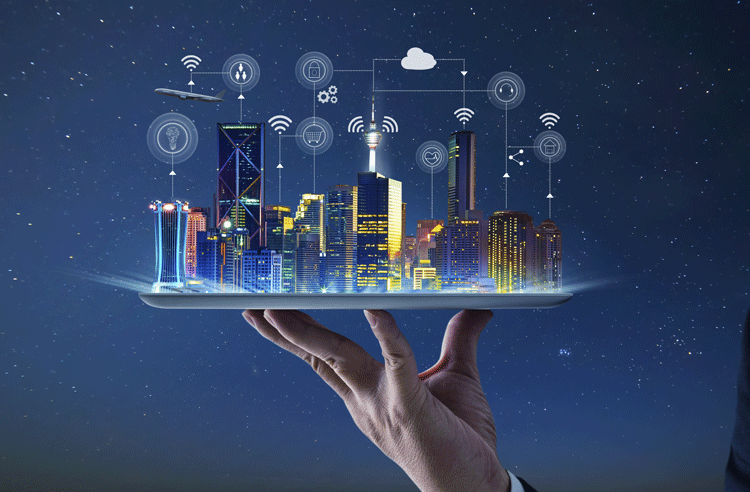Want To Make Your City “Smart” Here’s What You Need To Know About How The Internet of Things Relates To Cities
You’ve heard of smartphones, but what about smart cities?
As we move into an increasingly digital future, we’re connecting more and more things to the internet. Want street lights to switch on-and-off at a certain time relative to sunset? Connect it to the internet. People having trouble knowing where to park? Connect parking meters to the internet and drivers can check which are available from their phone.
Connecting things like street lamps, parking meters, coffee makers, thermostats, security cameras, and many other devices creates what we call the Internet Of Things (IoT). In the future, anything that can be connected will be connected. And that includes cities just like yours.

Here’s What A “Smart City” Looks Like
Using the Internet of Things to create smart cities is still a relatively new concept. Many cities are already using it, though. And it’s a good bet that the trend of using IoT to improve the lives of people within cities will continue rapidly. Here are some of the many ways connecting city systems to the Internet of Things can look like:
– Roadway sensors monitor conditions related to traffic congestion, weather, accidents, etc. Sensors can send messages to signs in the town and/or smartphone apps.
– Smart parking meters show available spots on apps, which cuts down drive time for those working and shopping in your city.
– Smart thermostats regulate heating and cooling to optimize energy usage in commercial buildings.
– Water monitors streamline water quality assessments, detect leaks, and make it easier to manage water use.
– Smart lampposts only brighten during specific lighting conditions or when pedestrians or vehicles approach.
– A smart electricity grid analyzes energy use and adapts in order to deliver the optimal supply needed for each household.
– Air pollution sensors and weather prediction monitors make it easier to monitor sustainability efforts.
– Waste sensors in garbage bins monitor garbage levels and optimize routes for waste collection.
– Smart emergency cameras help dispatcher determine severity of emergencies and find optimal routes to the locations.
Pros and Cons To Using The Internet Of Things
IoT allows for nearly endless connections to take place, and we don’t fully understand yet what the impact of those connections will be. It’s an exciting prospect to think of city systems working together to make things better for the people who live in the cities. But there are also some challenges and concerns.
Security is the biggest issue facing the Internet of Things. The more devices that are connected to the internet, the greater the potential that someone could hack into the system. There’s also the related issue of privacy and data security to consider. The issues don’t have easy answers, but they are something to keep in mind and continue discussing as you start to use IoT in your city.
Don’t Get Left Behind
The analyst firm Gartner estimates that by 2020 there will be over 26 billion connected devices making up the Internet of Things. That sounds like a lot, but other sources say that estimate is actually too low. Some even put the number at over 100 billion.
With so much of the world incorporating technology, you don’t want your city to miss-out. Here are Retail Attractions, we can help you navigate issues related to economic and retail development as your city becomes increasingly influenced by the IoT and other technology. Contact us today to learn how we can help your city.
If you found this article useful, then you’ll probably also like my books City On A Hill and The Devil’s In The Details. Click on the titles below to learn more.
– City On A Hill: A Book About Cities and How to Make Them Better
– The Devil’s In the Details: Things that Challenge City Government and the Language of Development.
